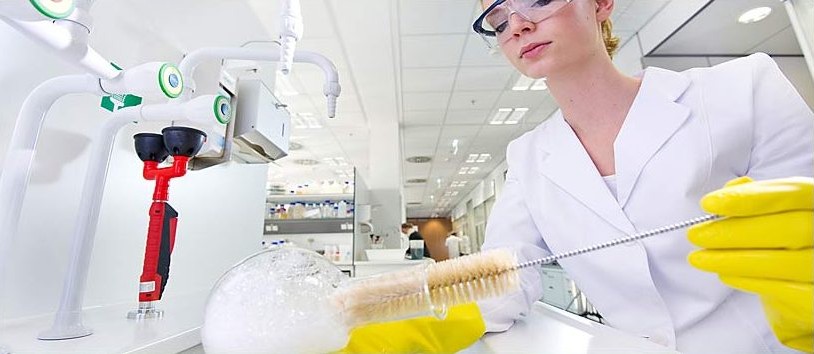Manual Cleaning
What are the advantages of manual cleaning?
- Manual cleaning is clearly quicker if only single laboratory glass items are being cleaned.
- Stubborn dirt can be targeted mechanically by using brushes for example.
- The cleaning chemicals needed can be varied and exchanged at any time if required (and according to the type of contamination).
What needs to be taken into account for manual cleaning?
- Brushes which have a wire tip must be used with great care as they can damage the glass.
- The use of worn cleaning brushes should be avoided as their metal parts can also damage the glass surface.
- When using powdered cleaning agents it must be ensured that they have dissolved fully prior to starting the cleaning process.
- Once the cleaning process has been completed, the glass should be rinsed with hot water and left to dry and cool down before it is placed in a compartment drier if necessary.
- Manual cleaning is only partly reproducible (different users etc.).
Which safety measures need to be taken into consideration?
- Suitable gloves should always be worn!
- It is also recommended that safety glasses are worn because chemicals which adhere to the item being washed could be sprayed into the eyes during cleaning.
- Mats (in the sink and/or on the washing stand) protect against glass breakages when there is light knocking on the sink/washing stand and can thus also prevent injuries.

